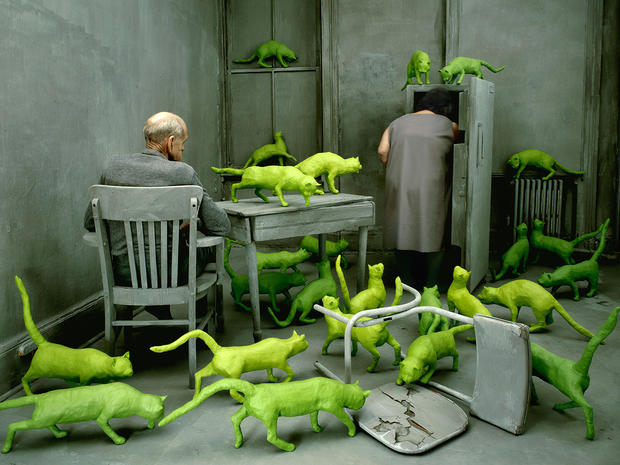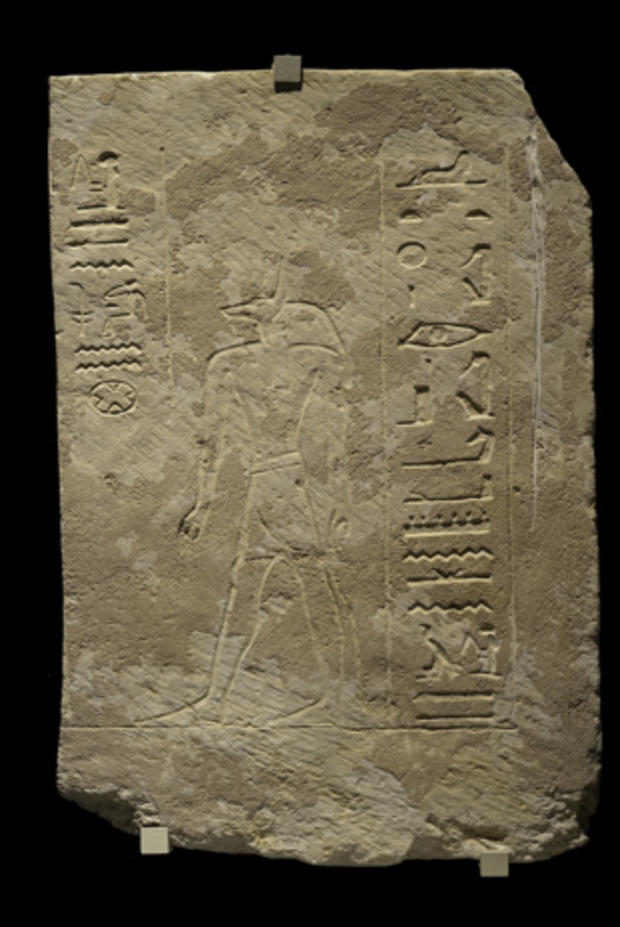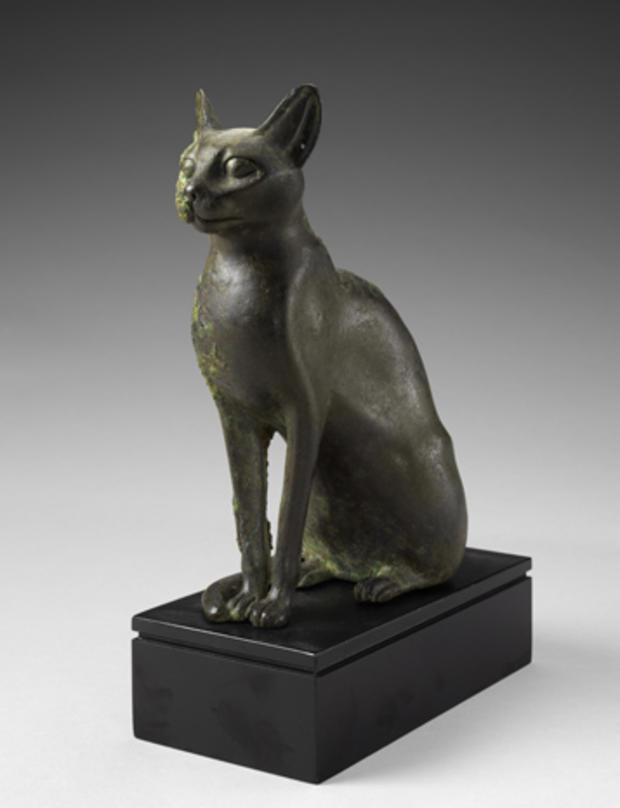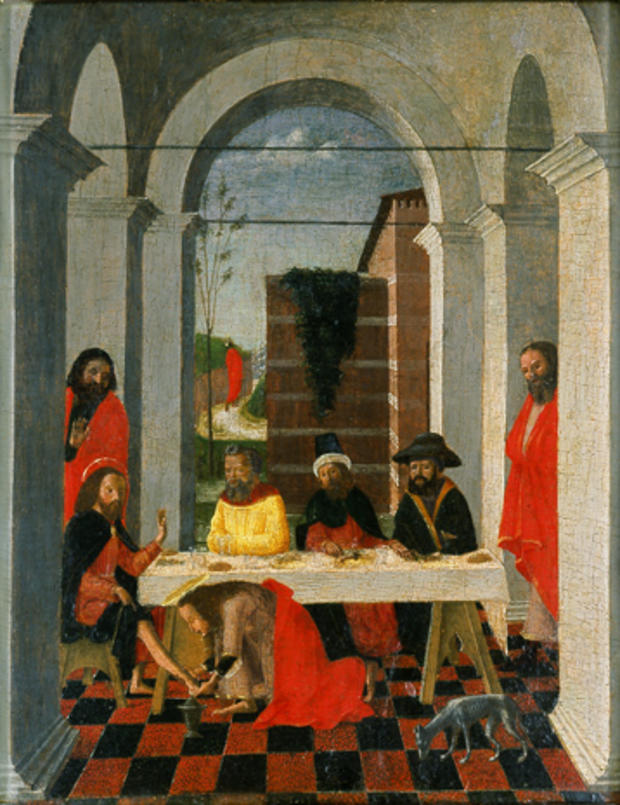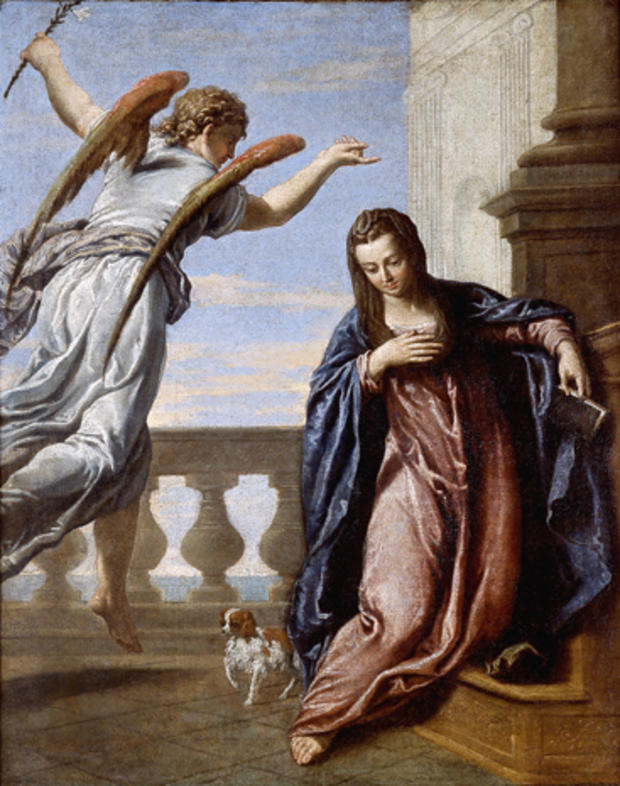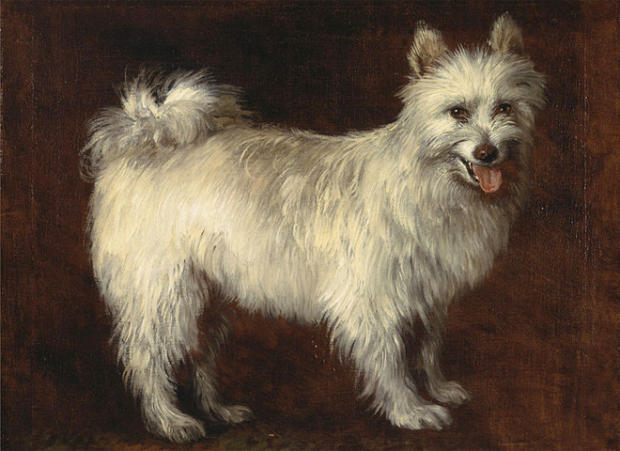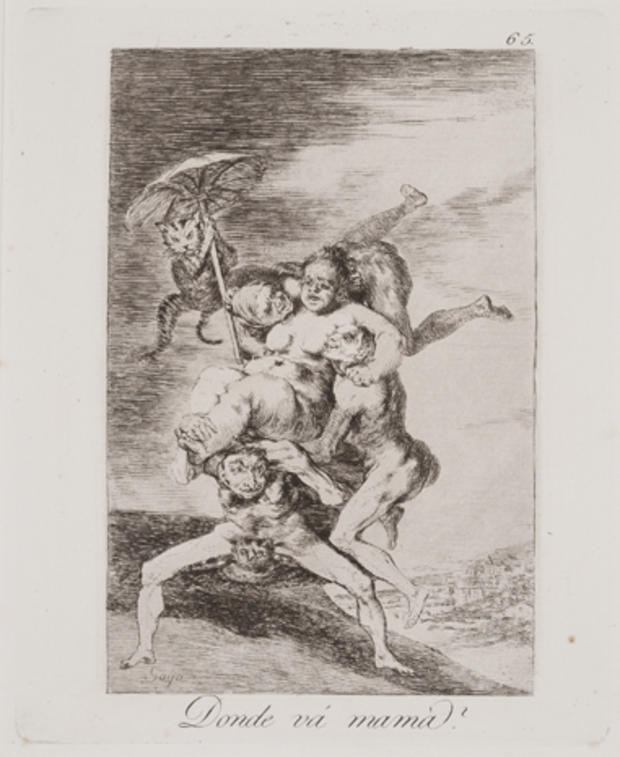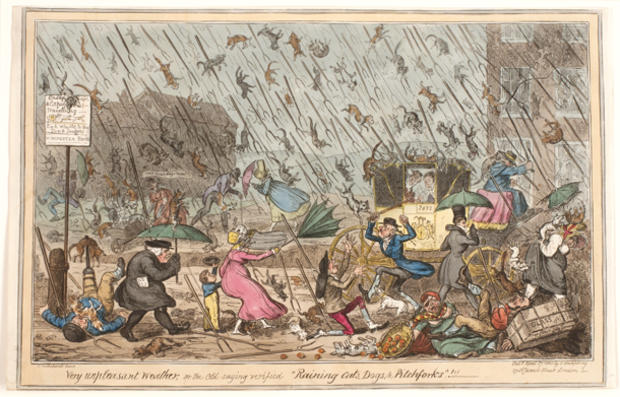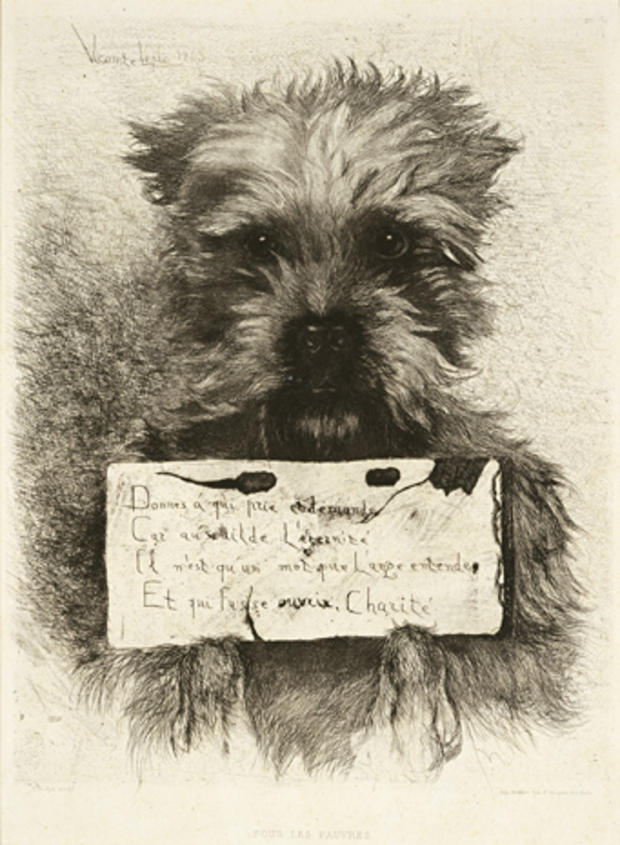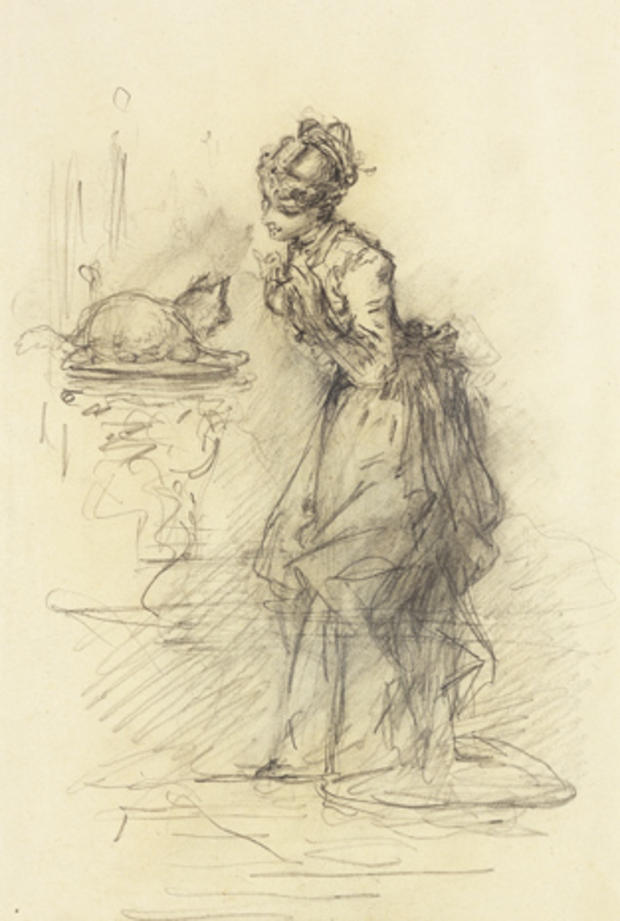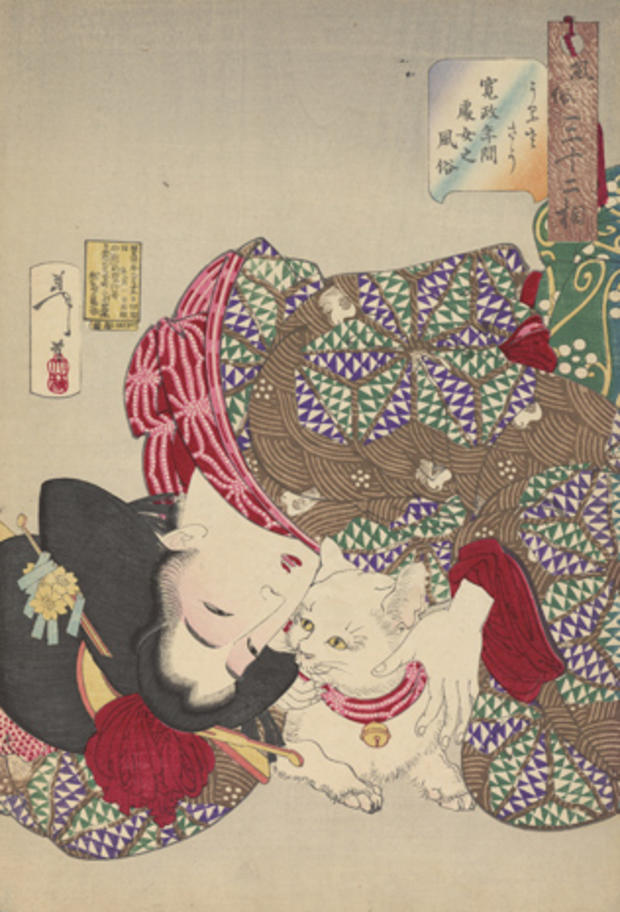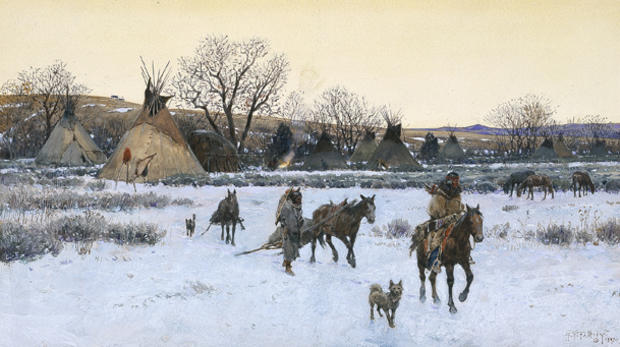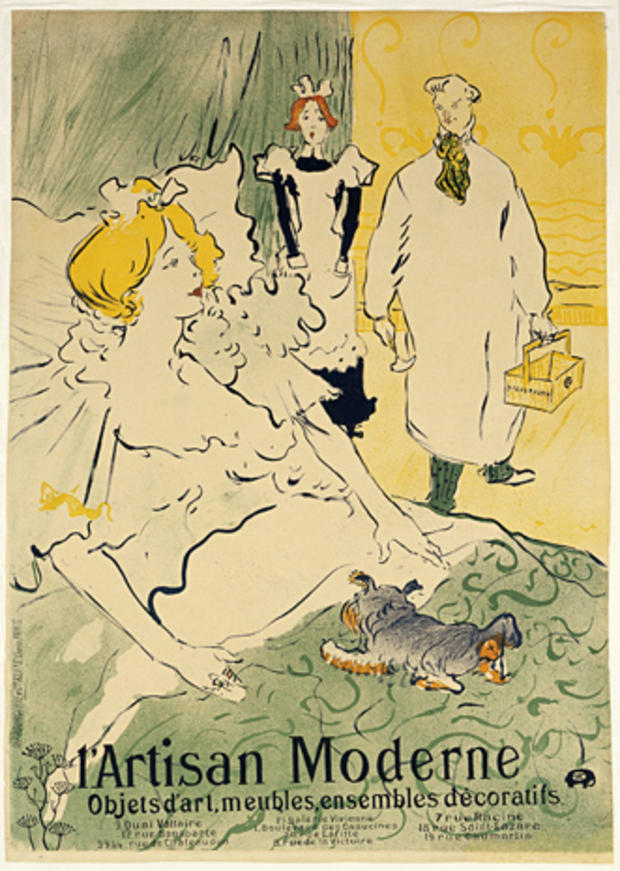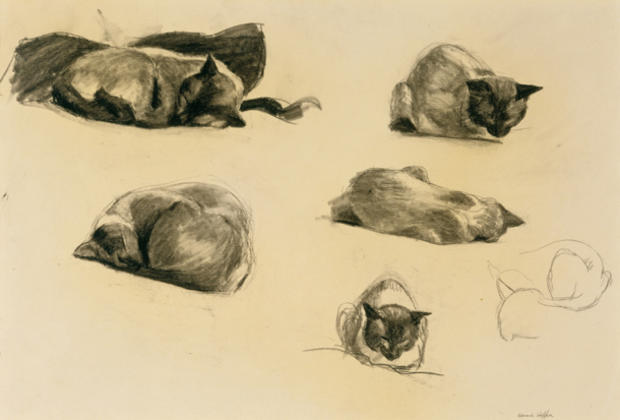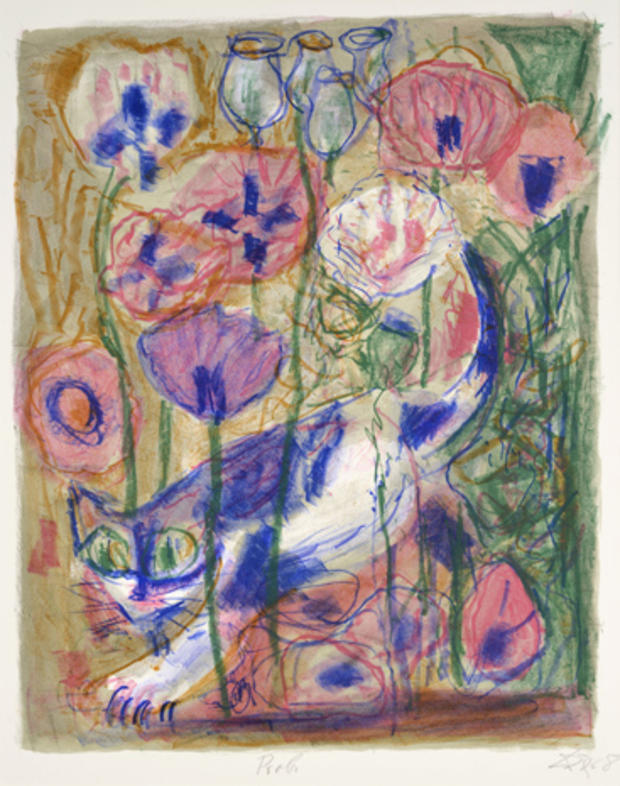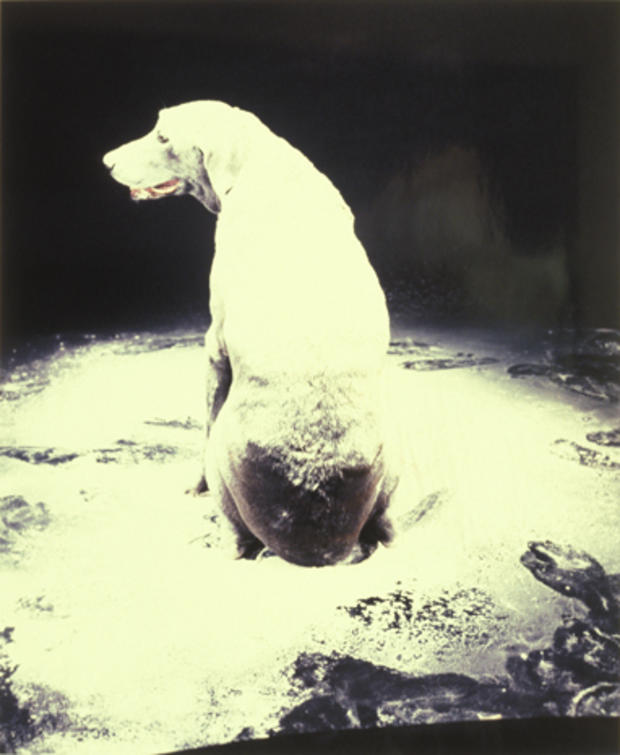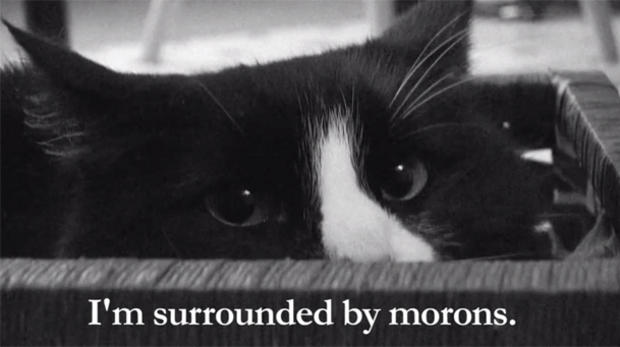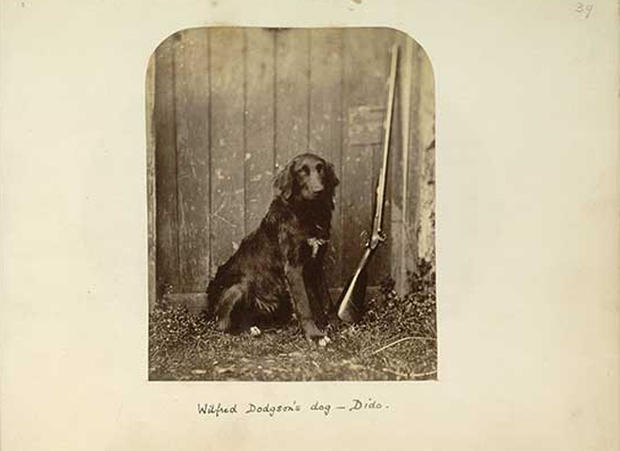Art history, starring cats and dogs
Cibachrome print by Sandy Skoglund, 1980.
Skoglund's 24 sculpted plaster cats covered with day-glo paint represent nature adapting to a post-nuclear world by turning bright green; they appear to have fared better than their human hosts.
Our modern obsession with our pets isn’t particularly modern, as artists have had four-legged muses for thousands of years.
Recently, the Blanton Museum of Art in Austin, Texas, has been breaking attendance records, as visitors have come to view "In the Company of Cats and Dogs," a millennia-spanning exhibition featuring works by such artists as Goya, Picasso, Hopper and Andrew Wyeth.
Anubis
Limestone panel of sarcophagus, Egypt, c. 1295-1069 BCE.
The Egyptian god Anubis, depicted with the head of a jackal (or desert dog) and the body of a man, cared for the dead through their internment and journey into the afterlife.
Seated Cat
Bronze by an unknown Egyptian artist, c. 712–332 BCE.
In Ancient Egypt cat mummies were sometimes encased in bronze coffins, such as the one at left. Some cats were also provided with mummified mice and pots of milk for their journey to the afterlife.
Supper at Bethany
Tempera on panel by Bernardo Butinone, 1490s.
The skinny dog kneels, lowering its head and extending the left leg back, mimicking the humility of Mary Magdelene as she anoints Christ's feet with oil.
The Annunciation
Oil on canvas from the workshop of Paolo Caliari (called Veronese), c, 1585.
In Veronese's painting of The Annunication, Mary is portrayed (along with her Bible) in her seaside villa with a very fashionable dog, likely a drop-eared Papillon - signifier of a wealthy, aristocratic women, said exhibition curator Francesca Consagra.
"It's not just to make the composition look nicer or to add a little ambiance or to create a setting, like a prop," Consagra told CBS News' Anna Werner. The inclusion of dogs "have deep connections to status, class, personality, aspirations, and big philosophies."
This fashionable dog came to represent wealth and fidelity in portraits of aristocratic women (particularly in Italy, France and Spain) from the 16th through 18th centuries.
Spitz Dog
Oil on canvas by Thomas Gainsborough, c. 1765.
Portrait of a Lady with a Dog
Oil on canvas by Marco Benefial, 1730s
This wealthy Italian woman's most fashionable accessory was her lap dog on a velvet pillow.
Where is Mother Going?
Etching, aquatint, and drypoint by Francisco José de Goya y Lucientes, 1797-98.
Goya often used witches in illustrations that attacked immoral elements of Spanish society. And what witch would be worth her salt without her attendant familiar - here, a cat serving as a maid, holding an umbrella above a witch, warlock and their offspring.
Very Unpleasant Weather
Hand-colored etching by George Cruikshank, 1820.
As if raining cats and dogs wasn't bad enough, this humorous etching depicts a very inclement downpour of cats, dogs and pitchforks.
Giornale per l’Anno 1822
Hand-colored woodcut and letterpress type, 1822.
This illustration, with a poem in Italian, likely warns of Austria, which had expanded its boundaries into what was northern Italy, following the Napoleonic Wars and the Congress of Vienna of 1815.
The poem reads, "Beware of oversized cats. Escape from the mouth and nab the paws. This cursed cat is neither afraid of revenge, nor rifles, nor bellows."
For the Poor
Etching and roulette by Ludovic Lepic, 1863.
You can almost hear Sarah McLachlan's "Angel" playing. In this print a cute dog dares our empathy by staring us in the eyes with a sign reading, "Give to those who pray and ask because the Angel at eternity's doorstep hears but one word that opens the way, Charity."
Lady With a Cat
Graphite on paper by Edouard de Beaumont, c. 1880.
A lively sketch of a woman doting upon her pet.
Looking Tiresome
Color woodblock print by Yoshitoshi Tsukioka, 1888.
An upper-class woman is depicted with her bell-wearing cat. The title (in Japanese, Urusa) could be translated as tiresome, annoying, or noisy - any one a possible reflection of the artist's reaction to the scene.
Breaking Camp
Gouache and watercolor by Henry F. Farny, 1891.
Farny was a French immigrant whose paintings depicted (if romantically) the lives of Plains Indians, after spending time with the Sioux and the Dakota. This painting illustrates how dogs were used by Native Americans for hunting, guarding and companionship long before European colonization. Before the arrival of horses, dogs were also used as pack animals.
L'Artisan Moderne
1896 lithograph by Henri de Toulouse-Lautrec.
In this 1896 poster by Henri de Toulouse-Lautrec for an interior design company, the dog symbolizes something much less mundane than advertising home furnishings.
"What you see is a beautiful blonde in a negligee in bed," said Consagra, "and he's coming in. And he's giving this look to the maid, which is sort of like, 'It's time for you to leave now, you don't need to be here.' And then, you've got this very eager dog at the woman's lap, which is to imply a sort of sexual innuendo here, that this man is coming into do more than just redecorate."
Cat Study
Conté crayon on paper by Edward Hopper, 1941.
Not that every pooch or pussycat in the exhibition is symbolic. Some are loving portraits from the hands that fed them, like Edward Hopper's study of his neighbor's Siamese cat, named Perkins Youngboy.
Cat in Poppyfield
Five-color lithograph by Otto Dix, 1968.
A prominent German artist whose early work was labeled "degenerate" by the Nazi regime, Otto Dix created this print of a prowling cat. The image could be interpreted as a wishful self-portrait – a lithe creature stalking a field of flowers reminiscent of Van Gogh's paintings - as the artist had suffered a stroke the previous year, paralyzing his left hand.
Antarctica
Color Polaroid by William Wegman, 1982.
For more than 40 years, William Wegman's Weimaraners have been delighting and baffling audiences in photographs, videos and children's books.
"You know, there's something about dogs that makes you want to wonder what they're thinking about," Wegman told Anna Werner. "And they let you do that. They let you look at them. Whereas if I'm staring at you too long, you'll wanna move, where they don't."
"Antarctica" is one of the last photos featuring Man Ray, Wegman's first dog, who was then dying of cancer.
The Whittler
Oil on canvas by David Bates, 1983.
A bright, stylized portrait by the native Texan of a whittler and his dog relaxing on a porch in the American South.
Henri 2, Paw de Deux
Video by Will Braden, 2012.
The exhibition "In the Company of Cats and Dogs" also features examples of a decidedly modern phenomenon: the Internet cat video, such as one featuring the existential "Henri, Le Chat Noir."
"I think they're mesmerizing, absolutely mesmerizing," said curator Francesca Consagra.
But are these feline videos art? "I think that says less about art and more about cats," she replied.
Wilfred Dodgson's dog - Dido
Albumen print by Lewis Carroll, 1856-57.
Charles Dodgson (a.k.a. Lewis Carroll, the author of "Alice’s Adventures in Wonderland") was an avid photographer. Among his subjects was his younger brother's gundog, Dido.
The exhibition "In the Company of Cats and Dogs" runs at the Blanton Museum of Art at the University of Texas at Austin through Sept. 21, 2014.
For more info:
Follow the Blanton Museum on Twitter (@blantonmuseum), Facebook, Instagram, Pinterest and YouTube
By CBSNews.com senior producer David Morgan
